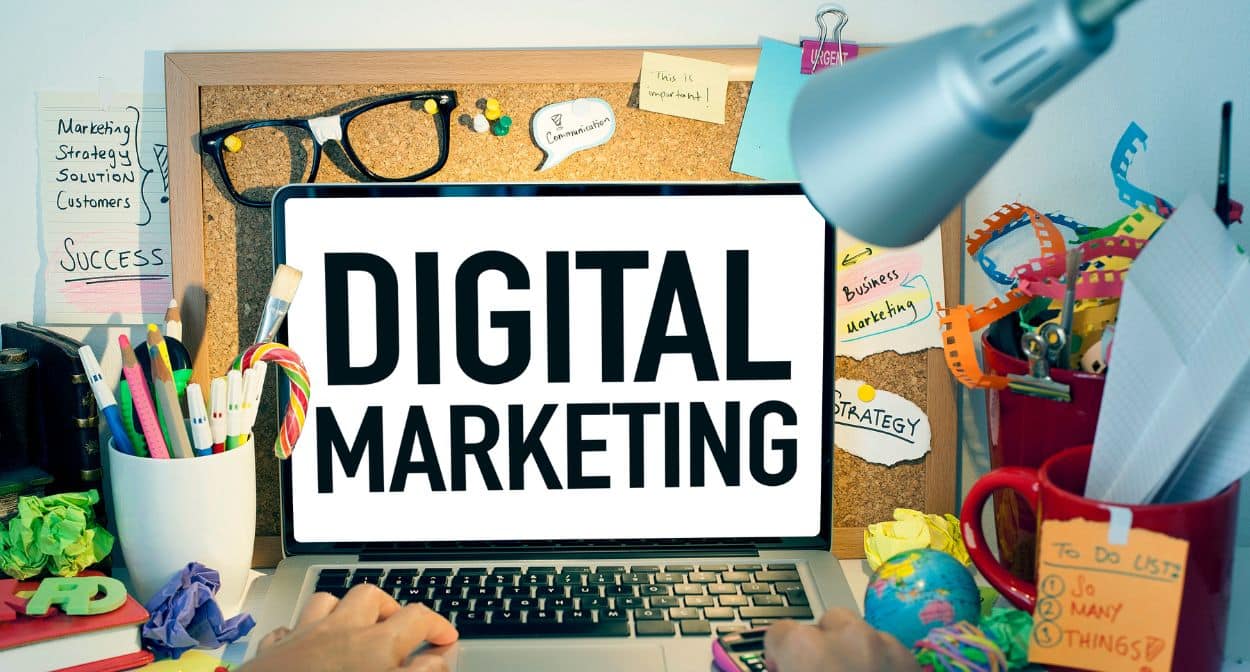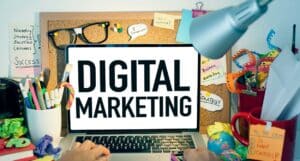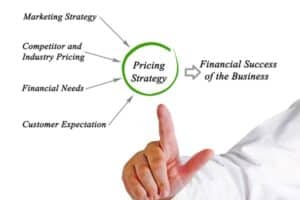Six Pillar Marketing Strategy
We Build Profitable Online Marketing Systems Using Our Proven Six Pillar Digital Marketing Strategy
All of our digital marketing services and strategies are built on the foundation of six marketing pillars or principles. Here is a quick overview of our direct marketing strategy you can start implementing immediately for your business.

Pillar 1: Target Audience – Audience & Targeting
In the first pillar of the Six Pillar Marketing Plan, we focus on identifying your ideal customer and target market. By understanding who they are, their needs, and where to reach them, you can tailor your marketing efforts for maximum effectiveness.
Start with ONE offer, ONE audience, and ONE plan
Each product or service requires a unique marketing approach, considering factors like target markets, competitors, ideal customers, and messaging. Every pillar will be distinct for each product or service.
 Pick a niche
Pick a niche
Your target market is not everyone. Determine who has the problem your solution solves and consider aspects like price, service, and quality. Focus on an industry or type of business that offers personal satisfaction, delivers value to customers, and ensures profitability.
 Analyze competitors
Analyze competitors
Identify direct and indirect competitors and compare your solution against theirs feature-by-feature. Determine your competitive advantage and develop the benefits and advantages of each distinctive feature.
 Create a client persona or avatar
Create a client persona or avatar
Knowing who you’re speaking to enables you to communicate with them more effectively. Base your avatar on existing clients or prospective ones, and consider demographics, interests, and psychographics.
By thoroughly understanding your target audience, you can create personalized and powerful marketing messages that resonate with your ideal customers. This empathetic approach allows you to connect with your audience on a deeper level, leading to more successful marketing campaigns.

Pillar 2: Messaging – Crafting Compelling Marketing Messages
In Pillar 2: Messaging, we delve into the heart of your marketing efforts – crafting messages that resonate with your audience and inspire them to take action. With a keen understanding of your audience’s pain points and aspirations, we’ll guide you through creating compelling marketing messages that not only address their needs but also showcase the unique value your product or service brings. By incorporating empathy and a deep understanding of your audience, your messaging will foster meaningful connections and drive your business growth.
Identify the Problem
Understanding your audience’s pain points is crucial in crafting a compelling marketing message. Start by describing the challenges they face in detail, focusing on the immediate and long-term consequences on a personal, emotional, social, and professional level. By showing empathy towards your audience’s struggles, you can create a connection that will make your messaging more impactful.
 Present the Solution
Present the Solution
Once you have identified the problem, it’s time to showcase the benefits of resolving it. Describe how your product or service can alleviate the pain points and paint a vivid picture of life without those challenges. By highlighting the positive outcomes, you can inspire your audience to take action and consider your solution as the answer to their problems.
 Establish Authority
Establish Authority
To build trust with your audience, explain the process behind your solution and showcase the features, benefits, and advantages it offers. Demonstrating your expertise and the value your product or service provides will strengthen your marketing message and make it more persuasive.
 Address Objections
Address Objections
Anticipate and tackle common objections related to beliefs, past experiences, and fear of the unknown. Bring up these concerns proactively and defuse them ahead of time, so prospects can confidently make a decision. Addressing objections demonstrates that you understand your audience’s concerns and are prepared to address them, making your solution even more appealing.
 Craft an Elevator Pitch
Craft an Elevator Pitch
Combine the problem, solution, target audience, and promise to overcome the biggest objection into a concise and persuasive statement. An effective elevator pitch can quickly grab your audience’s attention and pique their interest in your product or service, making it a powerful tool in your marketing arsenal.
 Use Testimonials as Proof
Use Testimonials as Proof
Collect believable and powerful testimonials from customers that directly address and defuse objections. Third-party endorsements can significantly enhance your message’s credibility and show potential customers that others have found success with your solution. Encourage customers to share their experiences and highlight the most persuasive aspects of their testimonials.
 Offer Risk Reversal
Offer Risk Reversal
Minimize the perceived risks associated with your product or service by offering guarantees, free trials, or money-back promises. Consider branding your risk reversal strategy for added impact. By alleviating potential concerns and making it easier for prospects to say “yes,” you can increase the likelihood of conversions and strengthen your marketing message.
Emphasize Uniqueness
Choose a unique selling point that sets you apart from the competition and highlight it in your messaging. Emphasizing what makes your product or service different will capture your audience’s attention and position you as the preferred solution provider in their minds.
By following these guidelines and crafting marketing messages with empathy and a deep understanding of your audience’s needs, you can inspire them to take action, ultimately leading to increased conversions and growth for your business.

Pillar 3: Media – Planning & Placement
In Pillar 3, we’ll explore the various media options available for your marketing campaigns, and guide you in selecting the best platforms to reach your target audience effectively. From understanding your customer’s awareness level to leveraging different media types, we’ll help you craft a tailored marketing strategy that maximizes your business’s growth potential.
Customer Awareness Levels
First, we need to determine the awareness level of your potential customers. Depending on their familiarity with their problems, potential solutions, and your brand, we can categorize them into five levels: Unaware, Problem Aware, Solution Aware, Brand Aware, and Most Aware. This classification helps us tailor the right messages and choose suitable media platforms for each audience segment.
 Marketing Funnel: The Framework of Your Digital Advertising
Marketing Funnel: The Framework of Your Digital Advertising
Your marketing funnel can be divided into three main segments: Top of Funnel (Cold Audiences), Middle of Funnel (Warm Audiences), and Bottom of Funnel (Hot Audiences). Each segment caters to different audience awareness levels and requires specific media creatives and placements to achieve its goals.
Top of Funnel
This stage captures the attention of cold audiences who are Unaware or Problem Aware. The goal is to increase awareness, offer a small solution, and encourage action. Offers may include content consumption, lead magnet downloads, or low-cost purchases. Creatives include Google Ads, social media ads, video ads, and display ads. Placements can be on search engines, social media, landing pages, and other websites where your target audience is present.
Middle of Funnel
Warm audiences who are Solution Aware or Brand Aware fall into this category. The aim is to educate, position your brand as an expert, and increase curiosity about your solution. Offers include content consumption and CTAs to the main offer. Creatives consist of articles, blog posts, edutainment videos, and email sequences. Placements include your blog, social media, other websites, email, and retargeting ads.
Bottom of Funnel
Hot audiences are those who are Most Aware and ready to make a purchase decision. The goal is to convert them into customers through the main offer and backend offers. Creatives include sales pages, webinars, sales videos, and sales scripts. Placements can be on your website, in-person, or over the phone.
Building Your Marketing Funnel
Start by developing your Bottom of the Funnel Media Plan, then work your way up to the Middle and Top of the Funnel. This retrograde analysis ensures a coherent strategy with clear goals, creatives, and placements for each stage of the marketing funnel.
 Advertising: Creative and Media Planning
Advertising: Creative and Media Planning
Your advertising should align with your brand values, style, and emotional appeal. Consistency in logos, fonts, colors, images, and copy is crucial to establish a strong brand identity. You’ll also need a mix of content formats, such as blog posts, articles, case studies, testimonials, sales copy, and scripts for videos, to create an engaging marketing campaign.
 Placement: Media Buying
Placement: Media Buying
Selecting the right placements for your ads involves targeting, budgeting, and choosing between organic and paid options. Your website serves as your online marketing home base, featuring your home page, blog, landing pages for opt-ins, and sales pages integrated with an email service provider.
By understanding the different media options and how they fit into your marketing funnel, you can create a tailored advertising strategy that reaches your audience effectively and drives your business growth.

Pillar 4: Lead Capture – Turning Interested Prospects into Paying Customers
In Pillar 4, we’ll dive into the world of lead capture and collection, where you’ll learn how to turn interested prospects from your advertising campaigns into paying customers. We’ll also explore strategies to increase your website’s conversion rate and discuss the importance of segmenting your audience.
Why Collect Leads: Hunting vs. Farming
Unlike the high-energy, sporadic outcomes of hunting-style marketing, such as cold calling, farming-style marketing like direct marketing spreads the energy out over time and yields more reliable results. The goal is to focus your marketing resources on a smaller, more engaged audience, rather than treating all prospects equally.
 Audience Segmentation and Lead Capture
Audience Segmentation and Lead Capture
Lead capture allows you to identify audience members who are genuinely interested in your offer. By nurturing these leads, you can concentrate your selling efforts on a smaller, more receptive group of people.
 The Purpose of Your Ads and Landing Pages
The Purpose of Your Ads and Landing Pages
Your ads should separate the interested from the uninterested and drive prospects to your landing page. The landing page’s primary function is to sell the desired next action, such as downloading a lead magnet or signing up for a newsletter.
 Lead Magnets: An Ethical Bribe
Lead Magnets: An Ethical Bribe
Lead magnets offer value in exchange for contact information, leveraging the principle of reciprocity and positioning your brand as an expert. Examples of lead magnets include reports, digital tools, case studies, surveys, free samples, webinars, low-ticket items, and coupons.
 Squeeze Pages or Opt-in Landing Pages
Squeeze Pages or Opt-in Landing Pages
Squeeze pages are designed to encourage visitors to make a decision and provide only the necessary information to get the opt-in. The promise of an immediate payoff should be compelling enough to reduce resistance while still qualifying the lead.
Types of Lead Capture Actions
Lead capture actions can include website forms and email, phone calls, text messages, and social media messaging.
Where Do Leads Go? A Database or List!
Leads can be stored in custom audiences on platforms like Google and Facebook, as well as CRM (Customer Relationship Management) systems or EMS (Email Management Systems).
CRM Systems
CRM systems are ideal for longer or more complicated sales processes, often involving in-person consultations. Industries that benefit from CRM systems include B2B sales and large-scale B2C services like home improvement, financial management, or real estate. Popular CRM systems include Salesforce, Hubspot, Act!, Monday.com, and Zoho.
EMS Systems
EMS systems are better suited for larger markets with smaller commitments in time, money, and resources. Examples of industries where EMS is more effective include retail, eCommerce, and digital products and training.
By understanding the importance of lead capture and collection, segmenting your audience, and employing the right tools and strategies, you’ll be able to turn prospects into paying customers more effectively and efficiently.

Pillar 5: Follow Up – Closing More Sales with Effective Communication
In Pillar 5, we’ll explore the essential follow-up methods that will help you close more sales. You’ll learn how to craft a follow-up strategy that keeps prospects engaged with your brand and encourages them to purchase from you.
The Middle of Your Funnel: Nurturing Leads
Leads are prospects who have shown interest in your offering and are qualified to take action. Once you have collected leads, the nurturing process aims to increase their level of interest from vague curiosity to a strong desire to purchase.
 Your Automated Sales System
Your Automated Sales System
By harmonizing the strategies of Pillar 4 and Pillar 5, your automated sales system can successfully guide prospects through the sales funnel. As you capture leads and consistently follow up with them, you nurture their interest in your offerings and cultivate a strong desire to make a purchase.
This integrated approach, supported by the right EMS or CRM, ensures that your sales process is efficient, personalized, and effective, paving the way for lasting success in your business endeavors.
The Role of Email Management Systems and Customer Relationship Management Systems
EMS and CRM play a vital role in maintaining engagement with your leads, providing an organized platform for communication and relationship-building. An EMS is best suited for larger markets, where the sale requires a smaller commitment in time, money, and resources. CRM, on the other hand, is ideal for longer or more complex sales processes that involve multiple touchpoints with a sales consultant.
Regardless of the system you choose, both options enable you to store leads and communicate with them through targeted messaging. This targeted communication helps build trust and rapport, ultimately increasing the likelihood that your prospects will convert into paying customers.
 The Power of Your List
The Power of Your List
Your list is the foundation for ongoing communication with prospects, allowing you to transition from a bothersome pest to a welcome guest who helps protect them from their problem. With a list, you can test various offers, learn from their success or failure, and optimize your messaging for better results.
Small Bets Lead to Big Wins
Having your own database reduces the cost of testing new offers and provides a pre-built audience for all future offers. This approach enables you to make small bets that can lead to significant wins over time.
Testing and Optimization
A/B testing is a valuable tool for optimizing your offers and messaging. By testing different versions of your content, you can identify the most effective strategies to engage your audience and drive sales.
It’s All About Relationships
Ultimately, the power of Pillar 5 lies in its ability to transform your business from a mere service provider to a trusted partner in your customers’ lives. By building meaningful relationships and adding value through consistent follow-up, you genuinely understand their needs and concerns. This empathetic, narrative-driven approach positions your brand as a caring protector and expert, guiding prospects from initial interest to enthusiastic advocacy for your business. Embrace the strategies outlined in Pillar 5 and witness the profound impact they can have on your business’s longevity and success.

Pillar 6: Closing & Conversions – The Final Step Towards Success
As we explore the final pillar of our comprehensive marketing strategy, we focus on essential techniques for closing sales and optimizing conversion rates. By applying the valuable knowledge gained through the previous pillars, you’ll be well-prepared to craft a thriving direct marketing strategy.
Conversion Rate Optimization
Embark on a deep dive into the world of conversion rate optimization. Understand the importance of continuous improvement in your marketing efforts and how to effectively analyze your audience’s behavior. Apply targeted strategies to captivate your leads and convert them into loyal customers, ultimately leading to sustainable business growth.
 Setting Up Tracking & Analytics
Setting Up Tracking & Analytics
Uncover the crucial role that tracking and analytics play in shaping your direct marketing strategy. Delve into the key differences between tracking, which focuses on what happened, and analytics, which is about finding valuable insights within the data. Learn how to set up tracking and analytics tools that allow you to make informed, data-driven decisions and optimize your marketing campaigns.
 Remove Obstacles to the Sale
Remove Obstacles to the Sale
Identify and address barriers that may be hindering your prospects from making a purchase. By pinpointing and eliminating these obstacles, you’ll create a smoother buying process, making it easier for leads to transition into satisfied customers.
 Maintain Trust with Positioning
Maintain Trust with Positioning
Explore the vital role of positioning in building trust with your potential customers. Learn how consistently providing valuable education and maintaining a professional expert image can strengthen your relationship with leads, leading to increased trust and a higher likelihood of them choosing your solution.
 Developing Pricing Strategies
Developing Pricing Strategies
Master the art of creating effective pricing strategies that cater to different customer preferences. Learn how to offer multiple package options to increase perceived value and prevent overwhelming your customers. Discover the benefits of bundling products or services instead of discounting them, ultimately leading to higher profit margins and satisfied customers.
 Optimizing Your Conversion Process
Optimizing Your Conversion Process
Finally, delve into the intricacies of optimizing your conversion process, from pre-qualifying meetings and booking appointments to delivering persuasive sales presentations and closing deals. By mastering the steps required to guide your leads through the buyer’s journey, you’ll be well on your way to turning them into satisfied, paying customers who contribute to the long-term success of your business.
In conclusion, each pillar of our comprehensive marketing strategy plays a crucial role in shaping the success of your business. By meticulously crafting and integrating every aspect, from targeting your ideal audience to closing sales and optimizing conversions, you create a harmonious and effective marketing ecosystem. As you navigate through this journey, remember the importance of empathy, building trust, and maintaining a strong connection with your customers. These values, combined with your strategic efforts, will pave the way for a thriving business that consistently evolves, grows, and exceeds expectations
Do you have all Six Pillars built for your business?
If not, we can help you implement a complete Six Pillar Digital Marketing Strategy to help your business generate a continuous flow of profitable leads.
We Build Profitable Online Marketing Systems Using Our Proven Six Pillar Digital Marketing Strategy
All of our digital marketing services and strategies are built on the foundation of six marketing pillars or principles. Here is a quick overview of our direct marketing strategy you can start implementing immediately for your business.

Pillar 1: Target Audience – Audience & Targeting
In the first pillar of the Six Pillar Marketing Plan, we focus on identifying your ideal customer and target market. By understanding who they are, their needs, and where to reach them, you can tailor your marketing efforts for maximum effectiveness.

Start with ONE offer, ONE audience, and ONE plan
Each product or service requires a unique marketing approach, considering factors like target markets, competitors, ideal customers, and messaging. Every pillar will be distinct for each product or service.
Pick a niche
Your target market is not everyone. Determine who has the problem your solution solves and consider aspects like price, service, and quality. Focus on an industry or type of business that offers personal satisfaction, delivers value to customers, and ensures profitability.
Analyze competitors
Identify direct and indirect competitors and compare your solution against theirs feature-by-feature. Determine your competitive advantage and develop the benefits and advantages of each distinctive feature.
Create a client persona or avatar
Knowing who you’re speaking to enables you to communicate with them more effectively. Base your avatar on existing clients or prospective ones, and consider demographics, interests, and psychographics.
By thoroughly understanding your target audience, you can create personalized and powerful marketing messages that resonate with your ideal customers. This empathetic approach allows you to connect with your audience on a deeper level, leading to more successful marketing campaigns.

Pillar 2: Messaging – Crafting Compelling Marketing Messages
In Pillar 2: Messaging, we delve into the heart of your marketing efforts – crafting messages that resonate with your audience and inspire them to take action. With a keen understanding of your audience’s pain points and aspirations, we’ll guide you through creating compelling marketing messages that not only address their needs but also showcase the unique value your product or service brings. By incorporating empathy and a deep understanding of your audience, your messaging will foster meaningful connections and drive your business growth.

Identify the Problem
Understanding your audience’s pain points is crucial in crafting a compelling marketing message. Start by describing the challenges they face in detail, focusing on the immediate and long-term consequences on a personal, emotional, social, and professional level. By showing empathy towards your audience’s struggles, you can create a connection that will make your messaging more impactful.
Present the Solution
Once you have identified the problem, it’s time to showcase the benefits of resolving it. Describe how your product or service can alleviate the pain points and paint a vivid picture of life without those challenges. By highlighting the positive outcomes, you can inspire your audience to take action and consider your solution as the answer to their problems.
Establish Authority
To build trust with your audience, explain the process behind your solution and showcase the features, benefits, and advantages it offers. Demonstrating your expertise and the value your product or service provides will strengthen your marketing message and make it more persuasive.
Address Objections
Anticipate and tackle common objections related to beliefs, past experiences, and fear of the unknown. Bring up these concerns proactively and defuse them ahead of time, so prospects can confidently make a decision. Addressing objections demonstrates that you understand your audience’s concerns and are prepared to address them, making your solution even more appealing.
Craft an Elevator Pitch
Combine the problem, solution, target audience, and promise to overcome the biggest objection into a concise and persuasive statement. An effective elevator pitch can quickly grab your audience’s attention and pique their interest in your product or service, making it a powerful tool in your marketing arsenal.
Use Testimonials as Proof
Collect believable and powerful testimonials from customers that directly address and defuse objections. Third-party endorsements can significantly enhance your message’s credibility and show potential customers that others have found success with your solution. Encourage customers to share their experiences and highlight the most persuasive aspects of their testimonials.
Offer Risk Reversal
Minimize the perceived risks associated with your product or service by offering guarantees, free trials, or money-back promises. Consider branding your risk reversal strategy for added impact. By alleviating potential concerns and making it easier for prospects to say “yes,” you can increase the likelihood of conversions and strengthen your marketing message.
Emphasize Uniqueness
Choose a unique selling point that sets you apart from the competition and highlight it in your messaging. Emphasizing what makes your product or service different will capture your audience’s attention and position you as the preferred solution provider in their minds.
By following these guidelines and crafting marketing messages with empathy and a deep understanding of your audience’s needs, you can inspire them to take action, ultimately leading to increased conversions and growth for your business.

Pillar 3: Media – Planning & Placement
In Pillar 3, we’ll explore the various media options available for your marketing campaigns, and guide you in selecting the best platforms to reach your target audience effectively. From understanding your customer’s awareness level to leveraging different media types, we’ll help you craft a tailored marketing strategy that maximizes your business’s growth potential.

Customer Awareness Levels
First, we need to determine the awareness level of your potential customers. Depending on their familiarity with their problems, potential solutions, and your brand, we can categorize them into five levels: Unaware, Problem Aware, Solution Aware, Brand Aware, and Most Aware. This classification helps us tailor the right messages and choose suitable media platforms for each audience segment.
Marketing Funnel: The Framework of Your Digital Advertising
Your marketing funnel can be divided into three main segments: Top of Funnel (Cold Audiences), Middle of Funnel (Warm Audiences), and Bottom of Funnel (Hot Audiences). Each segment caters to different audience awareness levels and requires specific media creatives and placements to achieve its goals.
Top of Funnel
This stage captures the attention of cold audiences who are Unaware or Problem Aware. The goal is to increase awareness, offer a small solution, and encourage action. Offers may include content consumption, lead magnet downloads, or low-cost purchases. Creatives include Google Ads, social media ads, video ads, and display ads. Placements can be on search engines, social media, landing pages, and other websites where your target audience is present.
Middle of Funnel
Warm audiences who are Solution Aware or Brand Aware fall into this category. The aim is to educate, position your brand as an expert, and increase curiosity about your solution. Offers include content consumption and CTAs to the main offer. Creatives consist of articles, blog posts, edutainment videos, and email sequences. Placements include your blog, social media, other websites, email, and retargeting ads.
Bottom of Funnel
Hot audiences are those who are Most Aware and ready to make a purchase decision. The goal is to convert them into customers through the main offer and backend offers. Creatives include sales pages, webinars, sales videos, and sales scripts. Placements can be on your website, in-person, or over the phone.
Building Your Marketing Funnel
Start by developing your Bottom of the Funnel Media Plan, then work your way up to the Middle and Top of the Funnel. This retrograde analysis ensures a coherent strategy with clear goals, creatives, and placements for each stage of the marketing funnel.
Advertising: Creative and Media Planning
Your advertising should align with your brand values, style, and emotional appeal. Consistency in logos, fonts, colors, images, and copy is crucial to establish a strong brand identity. You’ll also need a mix of content formats, such as blog posts, articles, case studies, testimonials, sales copy, and scripts for videos, to create an engaging marketing campaign.
Placement: Media Buying
Selecting the right placements for your ads involves targeting, budgeting, and choosing between organic and paid options. Your website serves as your online marketing home base, featuring your home page, blog, landing pages for opt-ins, and sales pages integrated with an email service provider.
By understanding the different media options and how they fit into your marketing funnel, you can create a tailored advertising strategy that reaches your audience effectively and drives your business growth.

Pillar 4: Lead Capture – Turning Interested Prospects into Paying Customers
In Pillar 4, we’ll dive into the world of lead capture and collection, where you’ll learn how to turn interested prospects from your advertising campaigns into paying customers. We’ll also explore strategies to increase your website’s conversion rate and discuss the importance of segmenting your audience.

Why Collect Leads: Hunting vs. Farming
Unlike the high-energy, sporadic outcomes of hunting-style marketing, such as cold calling, farming-style marketing like direct marketing spreads the energy out over time and yields more reliable results. The goal is to focus your marketing resources on a smaller, more engaged audience, rather than treating all prospects equally.
Audience Segmentation and Lead Capture
Lead capture allows you to identify audience members who are genuinely interested in your offer. By nurturing these leads, you can concentrate your selling efforts on a smaller, more receptive group of people.
The Purpose of Your Ads and Landing Pages
Your ads should separate the interested from the uninterested and drive prospects to your landing page. The landing page’s primary function is to sell the desired next action, such as downloading a lead magnet or signing up for a newsletter.
Lead Magnets: An Ethical Bribe
Lead magnets offer value in exchange for contact information, leveraging the principle of reciprocity and positioning your brand as an expert. Examples of lead magnets include reports, digital tools, case studies, surveys, free samples, webinars, low-ticket items, and coupons.
Squeeze Pages or Opt-in Landing Pages
Squeeze pages are designed to encourage visitors to make a decision and provide only the necessary information to get the opt-in. The promise of an immediate payoff should be compelling enough to reduce resistance while still qualifying the lead.
Types of Lead Capture Actions
Lead capture actions can include website forms and email, phone calls, text messages, and social media messaging.
Where Do Leads Go? A Database or List!
Leads can be stored in custom audiences on platforms like Google and Facebook, as well as CRM (Customer Relationship Management) systems or EMS (Email Management Systems).
CRM Systems
CRM systems are ideal for longer or more complicated sales processes, often involving in-person consultations. Industries that benefit from CRM systems include B2B sales and large-scale B2C services like home improvement, financial management, or real estate. Popular CRM systems include Salesforce, Hubspot, Act!, Monday.com, and Zoho.
EMS Systems
EMS systems are better suited for larger markets with smaller commitments in time, money, and resources. Examples of industries where EMS is more effective include retail, eCommerce, and digital products and training.
By understanding the importance of lead capture and collection, segmenting your audience, and employing the right tools and strategies, you’ll be able to turn prospects into paying customers more effectively and efficiently.

Pillar 5: Follow Up – Closing More Sales with Effective Communication
In Pillar 5, we’ll explore the essential follow-up methods that will help you close more sales. You’ll learn how to craft a follow-up strategy that keeps prospects engaged with your brand and encourages them to purchase from you.
The Middle of Your Funnel: Nurturing Leads
Leads are prospects who have shown interest in your offering and are qualified to take action. Once you have collected leads, the nurturing process aims to increase their level of interest from vague curiosity to a strong desire to purchase.
Your Automated Sales System
By harmonizing the strategies of Pillar 4 and Pillar 5, your automated sales system can successfully guide prospects through the sales funnel. As you capture leads and consistently follow up with them, you nurture their interest in your offerings and cultivate a strong desire to make a purchase.
This integrated approach, supported by the right EMS or CRM, ensures that your sales process is efficient, personalized, and effective, paving the way for lasting success in your business endeavors.
The Role of Email Management Systems and Customer Relationship Management Systems
EMS and CRM play a vital role in maintaining engagement with your leads, providing an organized platform for communication and relationship-building. An EMS is best suited for larger markets, where the sale requires a smaller commitment in time, money, and resources. CRM, on the other hand, is ideal for longer or more complex sales processes that involve multiple touchpoints with a sales consultant.
Regardless of the system you choose, both options enable you to store leads and communicate with them through targeted messaging. This targeted communication helps build trust and rapport, ultimately increasing the likelihood that your prospects will convert into paying customers.
The Power of Your List
Your list is the foundation for ongoing communication with prospects, allowing you to transition from a bothersome pest to a welcome guest who helps protect them from their problem. With a list, you can test various offers, learn from their success or failure, and optimize your messaging for better results.
Small Bets Lead to Big Wins
Having your own database reduces the cost of testing new offers and provides a pre-built audience for all future offers. This approach enables you to make small bets that can lead to significant wins over time.
Testing and Optimization
A/B testing is a valuable tool for optimizing your offers and messaging. By testing different versions of your content, you can identify the most effective strategies to engage your audience and drive sales.
It’s All About Relationships
Ultimately, the power of Pillar 5 lies in its ability to transform your business from a mere service provider to a trusted partner in your customers’ lives. By building meaningful relationships and adding value through consistent follow-up, you genuinely understand their needs and concerns. This empathetic, narrative-driven approach positions your brand as a caring protector and expert, guiding prospects from initial interest to enthusiastic advocacy for your business. Embrace the strategies outlined in Pillar 5 and witness the profound impact they can have on your business’s longevity and success.

Pillar 6: Closing & Conversions – The Final Step Towards Success
As we explore the final pillar of our comprehensive marketing strategy, we focus on essential techniques for closing sales and optimizing conversion rates. By applying the valuable knowledge gained through the previous pillars, you’ll be well-prepared to craft a thriving direct marketing strategy.

Conversion Rate Optimization
Embark on a deep dive into the world of conversion rate optimization. Understand the importance of continuous improvement in your marketing efforts and how to effectively analyze your audience’s behavior. Apply targeted strategies to captivate your leads and convert them into loyal customers, ultimately leading to sustainable business growth.
Setting Up Tracking & Analytics
Uncover the crucial role that tracking and analytics play in shaping your direct marketing strategy. Delve into the key differences between tracking, which focuses on what happened, and analytics, which is about finding valuable insights within the data. Learn how to set up tracking and analytics tools that allow you to make informed, data-driven decisions and optimize your marketing campaigns.
Remove Obstacles to the Sale
Identify and address barriers that may be hindering your prospects from making a purchase. By pinpointing and eliminating these obstacles, you’ll create a smoother buying process, making it easier for leads to transition into satisfied customers.
Maintain Trust with Positioning
Explore the vital role of positioning in building trust with your potential customers. Learn how consistently providing valuable education and maintaining a professional expert image can strengthen your relationship with leads, leading to increased trust and a higher likelihood of them choosing your solution.
Developing Pricing Strategies
Master the art of creating effective pricing strategies that cater to different customer preferences. Learn how to offer multiple package options to increase perceived value and prevent overwhelming your customers. Discover the benefits of bundling products or services instead of discounting them, ultimately leading to higher profit margins and satisfied customers.
Optimizing Your Conversion Process
Finally, delve into the intricacies of optimizing your conversion process, from pre-qualifying meetings and booking appointments to delivering persuasive sales presentations and closing deals. By mastering the steps required to guide your leads through the buyer’s journey, you’ll be well on your way to turning them into satisfied, paying customers who contribute to the long-term success of your business.
In conclusion, each pillar of our comprehensive marketing strategy plays a crucial role in shaping the success of your business. By meticulously crafting and integrating every aspect, from targeting your ideal audience to closing sales and optimizing conversions, you create a harmonious and effective marketing ecosystem. As you navigate through this journey, remember the importance of empathy, building trust, and maintaining a strong connection with your customers. These values, combined with your strategic efforts, will pave the way for a thriving business that consistently evolves, grows, and exceeds expectations
Do you have all Six Pillars built for your business?
If not, we can help you implement a complete Six Pillar Digital Marketing Strategy to help your business generate a continuous flow of profitable leads.

 Pick a niche
Pick a niche Analyze competitors
Analyze competitors Create a client persona or avatar
Create a client persona or avatar Present the Solution
Present the Solution Establish Authority
Establish Authority Address Objections
Address Objections Craft an Elevator Pitch
Craft an Elevator Pitch Use Testimonials as Proof
Use Testimonials as Proof Offer Risk Reversal
Offer Risk Reversal Marketing Funnel: The Framework of Your Digital Advertising
Marketing Funnel: The Framework of Your Digital Advertising Advertising: Creative and Media Planning
Advertising: Creative and Media Planning Placement: Media Buying
Placement: Media Buying Audience Segmentation and Lead Capture
Audience Segmentation and Lead Capture The Purpose of Your Ads and Landing Pages
The Purpose of Your Ads and Landing Pages Lead Magnets: An Ethical Bribe
Lead Magnets: An Ethical Bribe Squeeze Pages or Opt-in Landing Pages
Squeeze Pages or Opt-in Landing Pages Your Automated Sales System
Your Automated Sales System The Power of Your List
The Power of Your List Remove Obstacles to the Sale
Remove Obstacles to the Sale Maintain Trust with Positioning
Maintain Trust with Positioning Developing Pricing Strategies
Developing Pricing Strategies Optimizing Your Conversion Process
Optimizing Your Conversion Process